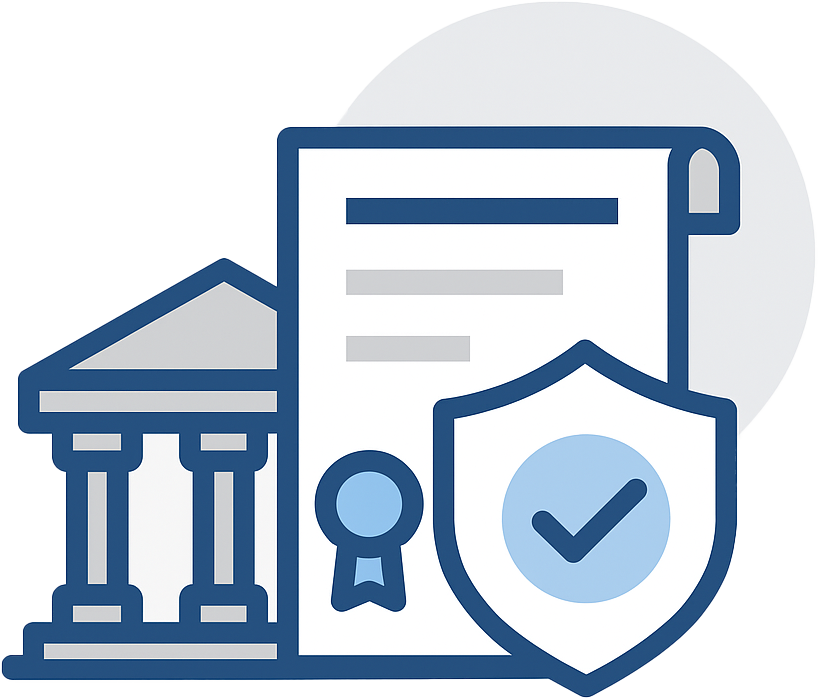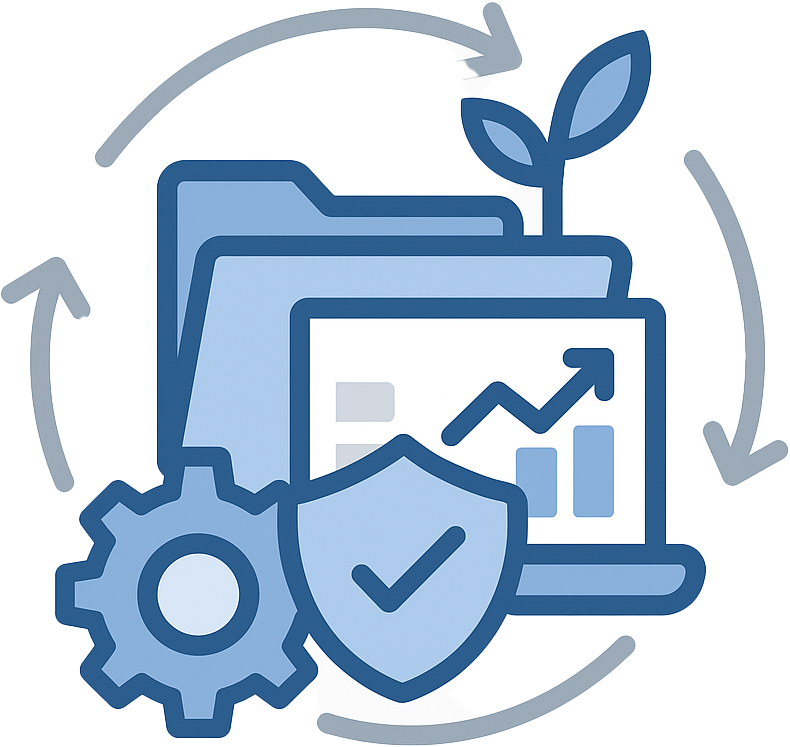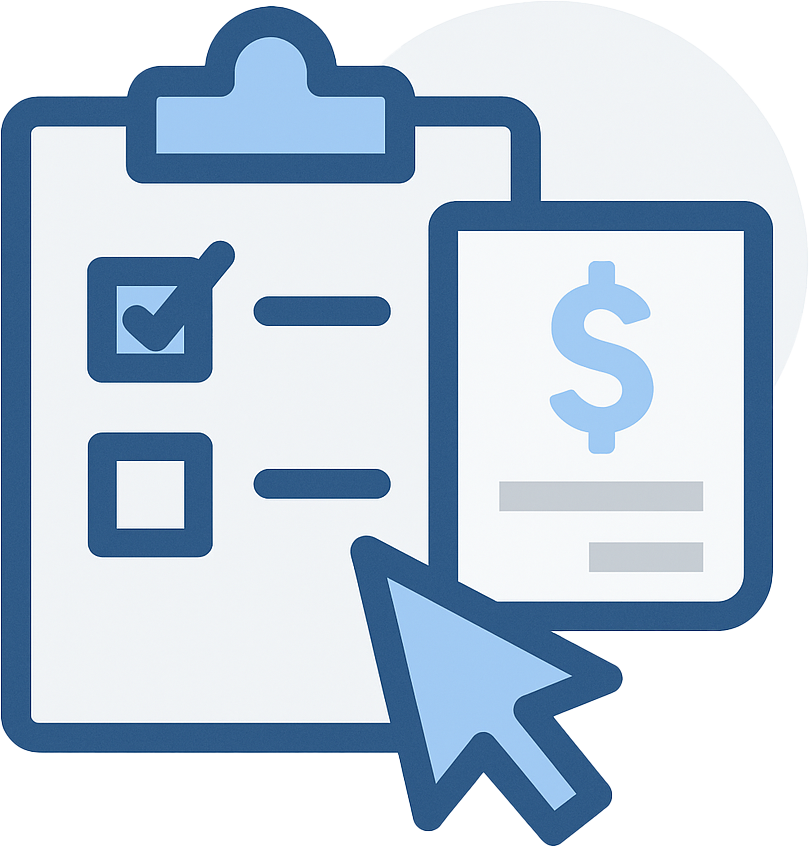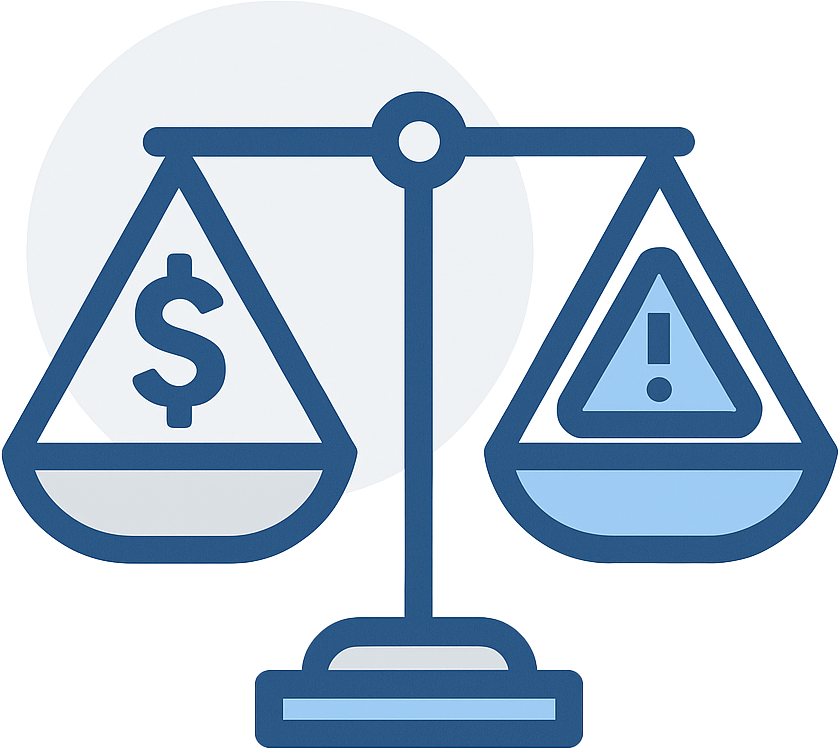Tier II Reporting 101: Your Complete Guide
What is Tier II Reporting? How much does it cost? Who actually needs to file... and what happens if you miss the deadline or get it wrong?
If you’re asking those questions, you’re not alone. Tier II is one of the most common - and misunderstood - environmental reporting requirements for U.S. businesses. Between confusing federal language, varying state systems, and inconsistent enforcement, it’s easy to feel stuck trying to figure out if (and how) it applies to your operation.
That’s why we put together this guide. We’re breaking down exactly what Tier II Reporting is, who it affects, what the process looks like, and how to avoid the most common (and costly) mistakes, all in plain English. Whether this is your first time filing or you just want to double-check your current approach, this guide will give you the clarity you need to get it done right.
Still have questions when you're done? That’s what we’re here for. Reach out to chat with a Tier II Reporting expert - no pressure, just answers. Okay, let’s dive in.
Table of Contents
What Is Tier II Reporting, Really?
Tier II Reporting falls under the federal Emergency Planning and Community Right-to-Know Act (EPCRA) and exists to keep local emergency responders and the public informed about hazardous materials stored in and around the local community (at your site!).
In plain terms, Tier II Reporting is how your facility tells emergency planners (like the fire department) what chemicals you have, how much you store, and where they’re located. That way, if there’s ever a fire, spill, or other emergency, first responders know exactly what they’re walking into.
The reporting requirement kicks in when you store certain materials over specific thresholds - not just fuels or solvents, but often things you might not expect, like batteries, lubricants, cleaning products, or even bulk food-grade ingredients. If it has a Safety Data Sheet (SDS) and you store enough of it, it may be reportable. These reports are due by March 1st every year.
To make it even more confusing, Tier II Reporting goes by a lot of different names:
EPCRA Reporting. SARA Reporting. Section 311/312 Reporting. Community Right-to-Know Reporting. In California, it’s called a Hazardous Materials Business Plan (HMBP) - but the core idea is the same across the U.S.
For a deeper dive, read: What is Tier II CRTK Reporting?

Who Actually Needs to File a Tier II Report?
More businesses fall under Tier II Reporting rules than you might think, and many don’t realize it until they’ve already missed a deadline. If your facility stores chemicals or materials that could pose a physical or health hazard, you might be required to report.
The short answer is this: if your facility has materials with Safety Data Sheets (SDS) and you store those materials above the applicable threshold (often 10,000 pounds - but can vary), then you're required to conduct Tier II reporting.
Common examples of industries that exceed material thresholds include:
- Manufacturing and processing facilities
- Auto repair shops and fleet maintenance yards
- Data centers and battery storage facilities
- School districts and universities
- Hospitals and labs
- Concrete and asphalt plants
- Municipal and utility operations
But Tier II isn’t just for large or high-risk industries. Even small businesses can trigger reporting requirements depending on what materials they store and in what quantities. Things like diesel fuel, cleaning agents, industrial lubricants, or other seemingly innocent bulk materials can all push you over the threshold, especially if they’re kept on-site year-round.
Not sure whether you need to file? We can help you find out - no pressure, no strings. Just reach out. Or check out this article: Who needs to do Tier II reporting?
Who Do I Submit My Tier II Report To? (It Depends)
Here’s the frustrating truth: Tier II Reporting is not a one-size-fits-all process. Who you report to (and how) depends entirely on where your facility is located.
Some states use one portal, others use a totally different one. Some require submissions to multiple agencies. Not just the state, but also local emergency planning committees (LEPCs), fire departments, or county-specific systems.
Take Fairfax County, Virginia, for example - you’re required to submit through the state portal and a separate county portal. Two reports, same facility. Now that’s not necessarily the norm, but it’s also not rare.
It doesn’t stop there:
- Submission portals vary by state and county
- Reporting fees vary by material
- Thresholds can vary by material
- Agencies you submit to can vary by location
- What gets submitted can vary by what you have on-site
The only thing that’s consistent nationwide? The deadline: March 1st.
That’s why, for every new client or location, we start with a full review of what’s required, which systems are involved, and who needs to receive the report. Otherwise, it’s way too easy to miss a required submission... and that’s where enforcement risk starts.
If you're not sure which system applies to your site, or whether you've submitted everywhere you're supposed to, we can help you sort that out fast, get in touch here.
Tier II vs TRI Reporting: What’s the Difference?
Tier II and TRI Reporting are often confused, but they serve very different purposes.
Tier II is about what you store. It tells local emergency responders what hazardous materials are on your site in case of an emergency. You’re required to file if you store certain chemicals above threshold amounts — even if you never use or release them.
TRI Reporting (Toxics Release Inventory) is about what you release into the environment. It’s submitted to the EPA and applies mostly to larger facilities that manufacture, process, or otherwise use certain toxic chemicals above specific thresholds.
Think of it this way: Tier II is for emergency preparedness. TRI is for environmental impact. Both fall under EPCRA. Both are due annually. But they have different rules, audiences, and triggers. It’s possible you may need to file one, both, or neither depending on your operation. To learn more, read: Is Tier II reporting the same as TRI reporting?

Can I Handle Tier II Reporting Myself?
It’s a fair question... and the honest answer is: maybe.
If you have the time, attention to detail, and a good grasp of your chemical inventory, it’s entirely possible to handle Tier II Reporting in-house. In fact, many small businesses with well-organized records and only a few materials to report do just that.
But whether you should take it on yourself depends on a few key things:
- How many materials are we talking about? The more materials, the more thresholds, classifications, and SDS data you’ll need to track.
- Do you understand your state’s reporting system? Many states have their own platforms, and they’re all a little different. That can be especially confusing if you have operations in more than one state!
- Is your inventory data clean and up to date? If not, prep work alone can take longer than expected.
- Have you done this before? If not, you may be surprised how easy it is to miss a detail that triggers an enforcement action.
- Do you have time for it? This isn’t a “set it and forget it” task, it takes prep, review, and submission, and sometimes even revisions if your report isn't airtight.
That’s why many businesses choose to outsource. With the right partner, you can reduce risk, streamline the process, and make sure your report is complete, accurate, and on time, without having to become a Tier II expert yourself.
Bottom line: if your site is simple and you’re comfortable digging into the requirements, go for it. But if you’d rather have someone double-check your thresholds, prep the report, and handle state-specific submission portals, we can help - reach out!
Thinking About Outsourcing Your Tier II Reporting? Here’s How We Do It.
If you’re considering outsourcing your Tier II Reporting, here’s what to expect when you work with RMA.
We start by getting to know your facility. That means reviewing your chemical inventory, asking the right questions about your materials, storage practices, and operations, and checking for common problem areas like outdated SDSs or unclear thresholds. From there, we identify what needs to be reported, where it needs to go, and which state, local, or even county-specific portals are involved.
Once we have the full picture, we prepare your reports, build your site maps, complete the submissions through the proper channels, and confirm receipt so there’s no confusion down the line.
But here’s where we’re different:
- We don’t farm this out to junior staff or outsource it overseas.
- We don’t rely on off-the-shelf AI tools that churn out generic reports.
- And we definitely don’t treat this like a one-size-fits-all checklist.
Every Tier II report we file is prepared by experienced compliance consultants who understand both the regulatory details and the real-world conditions at your facility. We know what questions to ask, what agencies look for, and how to file Tier II reports that are clean, accurate, and complete - the kind that don’t raise red flags or get you a call back from the fire marshal.
What you get isn’t just a report. You get confidence that it’s done right, backed by people who’ve been doing this for decades (and who actually care whether you stay in compliance!). If you want to learn more about our process and whether we might be a good fit to handle your Tier II reporting, contact us here to chat.

How Much Does Tier II Reporting Actually Cost?
Like most things in environmental compliance, the answer is: it depends. But here’s a solid ballpark.
For most facilities, Tier II Reporting costs between $1,500 and $7,500 per year when working with a consultant. That range covers everything from reviewing your inventory, verifying thresholds, cleaning up outdated SDSs, creating accurate site maps, and submitting to all the correct agencies or portals.
Where you fall in that range depends on several key factors:
- How many materials are you storing, and how organized is your data?
- How many locations do you need to report for?
- Is this your first time filing, or do you have a few reports under your belt?
- Do you need to report in multiple states or jurisdictions?
- Are there errors in last year’s report that need correcting?
- How close are you to the March 1st deadline?
If you’re starting from scratch or dealing with disorganized records, expect to be toward the higher end. If you’ve kept good data and just need help navigating the submission process, it may be much more straightforward. And if you wait until February? Expect rush fees or limited consultant availability since reporting season gets busy fast.
What about ongoing costs? Well unlike permits that require maintenance year-round, Tier II Reporting is just a report filed annually. That means that if you stick with a consultant who understands your operation, it's usually cheaper after year one. That said, if you have major changes like new chemicals, expansions, or enforement actions, you may need to budget for higher costs in additional years.
For most businesses, this is a once-a-year project. Just don’t wait until the last minute, or the cost (and stress) can spike quickly. For a deeper dive into pricing, check out our post on how much Tier II reporting costs.

How Long Does Tier II Reporting Take?
Totally fair question, and the answer is: usually a few weeks… if you start early.
In general, Tier II Reporting projects take anywhere from 1 to 4 weeks depending on:
- How organized your chemical inventory is
- How many materials and locations you’re reporting
- Whether this is your first time or you've submitted before
- How quickly you can provide the required data
But here’s the thing: most people wait until the last minute. And that’s when it gets risky.
Tier II season (January through late February) is incredibly hectic, not just for you, but for your consultant (if you’re using one). If you wait until late February to start gathering documents or reach out for help, there’s a good chance your consultant is already buried in other reports. At that point, even small issues like missing SDSs or unclear thresholds can snowball into missed deadlines. You can (and should) start preparing for Tier II reporting around October - don't wait until the last minute!
And unlike other reports, the March 1st Tier II deadline is strict. There are no extensions. No grace period. If you're late, you're out of compliance - and that can trigger fines, enforcement letters, or worse if something goes wrong and first responders weren’t properly notified.
So yes, the actual report prep may only take a week or two. But if you’re starting cold on February 20th, it’s not going to feel that way. Best move? Start early. If you’re not sure what you need or how much time it’ll take, reach out now, even if you’re just looking for a quick gut check.
What Happens If I Don’t File - or I Get It Wrong?
If your facility stores hazardous materials above threshold amounts and you don’t submit a Tier II Report (or you file it incorrectly) you’re in violation of both federal and state law under EPCRA. And while it may seem like a minor paperwork issue, regulators don’t treat it that way.
We've seen businesses hit with tens of thousands of dollars in fines, sometimes more, especially if a missed report leads to problems during an emergency. Check out our violation calculator to see how quickly those penalties add up. That’s because Tier II Reporting isn’t just about compliance. It’s about public safety.
When fire departments and first responders don’t know what chemicals are on-site, they’re flying blind. And if something goes wrong (a fire, explosion, chemical spill) and your facility never filed, you could be held liable. And not just legally, but morally and reputationally. These aren’t scare tactics, they’re real risks we’ve seen play out.
And enforcement doesn’t always come from a random inspection. It can be triggered by:
- An anonymous tip
- A fire department review
- An insurance audit
- A spill or incident
- A follow-up on a past report that’s suddenly missing
Once you’re on their radar, the process can become a lot more painful, and a lot more expensive. The bottom line? Tier II Reporting is a small lift compared to the cost of being out of compliance. If there’s even a chance your facility is subject to the requirement, it’s worth checking now (before someone else checks for you).

How RMA Helps You File Tier II Reports, Without the Guesswork
If you're staring down Tier II Reporting and not sure where to start, you’re not alone. For some businesses, it’s possible to manage in-house if you’ve got the time, clean data, and a solid understanding of the rules. But for many, the fastest and safest route is partnering with someone who has done this year after year for all kinds of facilities across the United States.
Whether it’s your first time filing, your report needs to go to multiple agencies, or you just want help cleaning up last year’s submission, we can meet you where you are. We work with facilities of all sizes, from small shops with a single material to multi-state operators juggling complex inventories.
Here’s what our process looks like:
- We review your inventory and SDSs
- Ask the right questions about usage, thresholds, and storage
- Identify exactly who you need to report to (state, local, fire, county)
- Prepare your reports and submit through the correct portals
- Build your required site maps
- Confirm receipt so there’s no ambiguity or follow-up risk
And if you’re filing in a state with weird quirks (looking at you, Virginia and California), we know how to handle that too.
More importantly, we don’t treat this like a box to check. You’ll work with seasoned consultants - not junior staff - who understand the technical details and the real-world context of your operations. We’ll guide you through every step and make sure you stay on track, on time, and out of trouble.
Whether you need full-service support or just a second set of eyes, we’re here to make Tier II Reporting simple, accurate, and headache-free. Not sure where you stand? Let’s talk. No pressure, no charge, just clarity.















